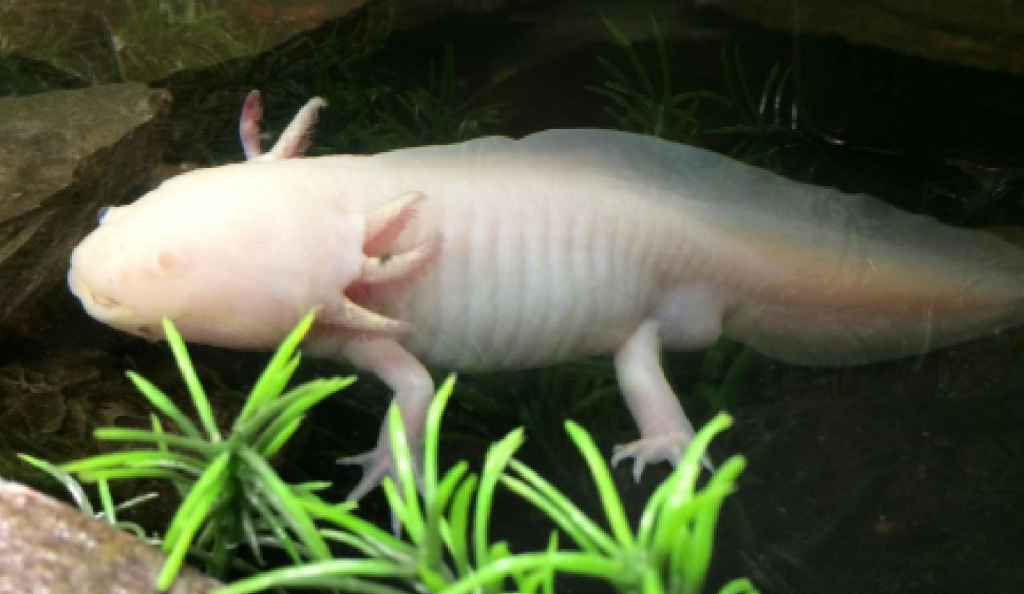ALL ABOUT AXOLOTLS

Have you met Plantasia Tropical Zoo’s axolotls? This article will tell you a little bit more about these amazingly unique creatures.
What are Axolotls?
Biology:
Axolotls are a type of salamander. Salamanders are amphibians, they usually have gills in the first part of their lives when they live in water, but after undergoing metamorphosis, develop lungs so that they can live on land. However, axolotls don’t make this transition, they live in the water all their lives. This trait is called neoteny. Axolotls usually live between 10 and 20 years.
An interesting feature they have is that they can regenerate limbs and organs after damage. For example, after losing a leg, they would grow it back again. This does mean that axolotl families sometimes snack on each other’s limbs when they are feeling hungry! Since they know they will be able to grow them back.
Appearance:
Because they don’t undergo metamorphosis, adult axolotls retain their gills and long tails. The gills are located on their heads, looking like a feathery mane. This is what they use to get oxygen from the water.
Axolotls come in various colours, such as black, brown, gold, grey, pink, and white. Depending on the size of their environment, they can grow between 20cm and 45cm long. They don’t have eyelids, but do have a naturally cute smile, which might be what makes them so popular!

Behaviour:
Axolotls are generally solitary creatures, but they can live together in captivity. Females usually have between 100 and 1000 babies at a time.
They are carnivores, mostly eating worms, insects, and small fish. They don’t have proper teeth, so quickly suction their food into their stomachs once they have snapped it up. Other than this, they are not very fast moving or active, they spend a lot of time hiding in the water waiting for prey to come by.
Where are they found?
Axolotls can live in high altitude freshwater environments. They are not very strong swimmers so prefer still water, and also have quite specific temperature requirements. They like to have lots of plants, logs, and rocks to hide behind.
They come from Lake Chalco and Lake Xochimilco, near Mexico City. They are endemic, meaning this is the only place in the world where they are naturally found.
However, they can now be found in people’s homes around the world, as they make popular pets, and in science labs where they are used for research into limb regeneration and tumour prevention.
Why are they important?
Axolotls are critically endangered and are a top priority for conservation. It is thought there may not be any left in the wild at all.
This is because Lake Chalco and Lake Xochimilco have been drained and polluted by the growth of Mexico City. The people take clean water out of the
lakes for drinking, and make the remaining water dirty with pesticides, fertilisers, minerals, and rubbish.
Invasive fish species also compete with axolotls for food, or can harm them for example by eating their babies. Additionally, some people have been hunting and stealing axolotls from the wild to sell them illegally.
What is being done?
The Mexican Government is aware of the situation and is trying to save axolotls. Unfortunately, Lake Chalco is already completely dried up, but Lake Xochimilco is now a protected habitat, meaning people are not allowed to dump rubbish there. Local groups have been restoring some parts of the lake to cleaner and healthier conditions to encourage wild axolotl populations to come back.
The government has also been encouraging education and eco-tourism to raise public awareness and responsibility. It is illegal to capture axolotls from the wild, so to get them as pets you have to go through a special breeder, and some countries require you to have a permit to keep one. It could be said that they have been saved by the pet industry, otherwise they might have become completely extinct by now.
We hope you have enjoyed learning about this amazing species, and we hope you can one day visit Peter and Toothless, here at Plantasia Tropical Zoo
With thanks to Swansea University Placement student
